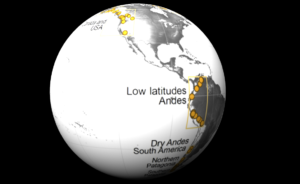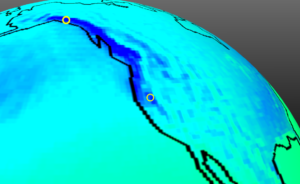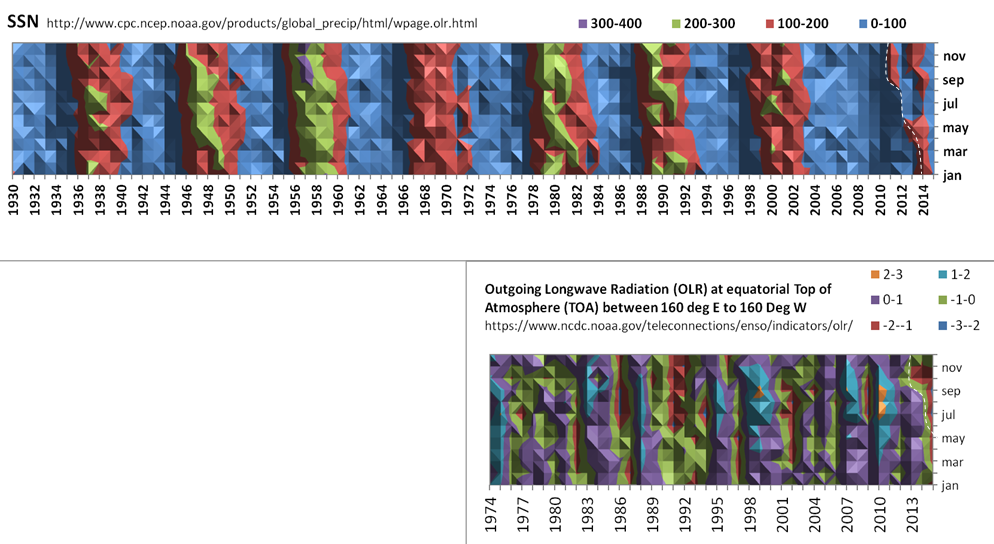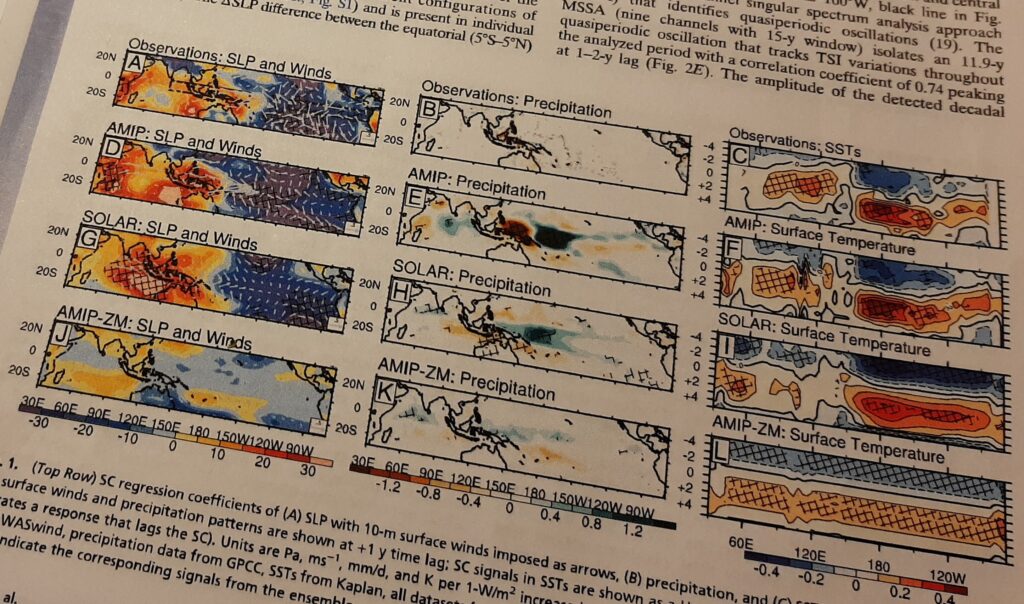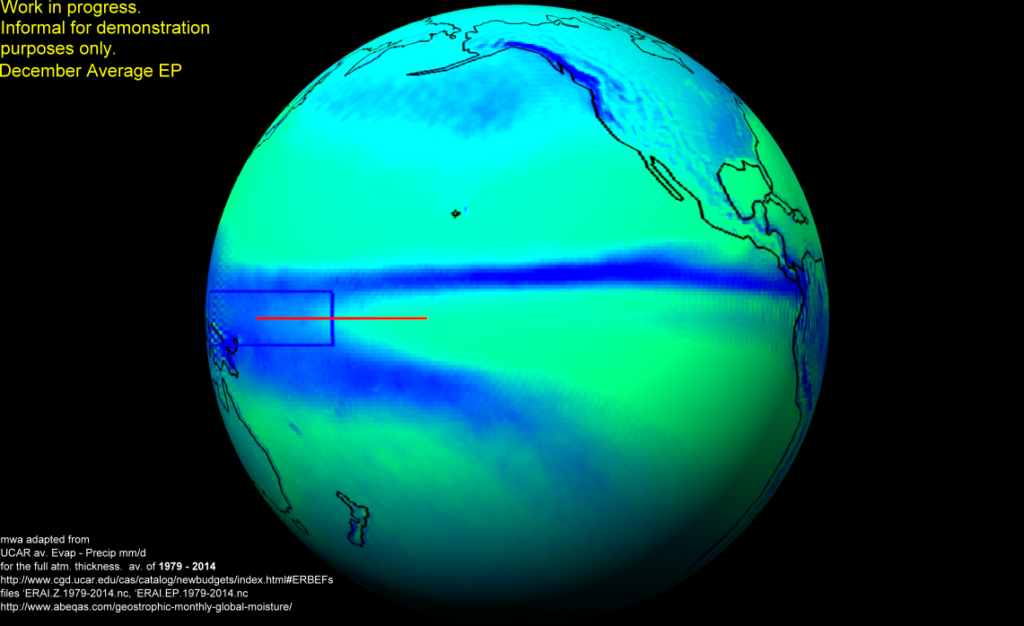
Geostrophic Moisture and Glaciation Patterns
Glaciers are only slow moving rivers in some perspectives. But although they may seem large and obvious, the conventional definitions of their advancements and retreats are challenging to sort out, even for experts. The fact that they are still rivers of a sort leads me to believe that a simple geostrophic moisture and latent heat circulation approach might add value. The featured image covers an average geostrophic atmospheric moisture state for December across the Pacific and most of the Western Hemisphere. December is a core month often attributed for prime moisture contributions to sustain any northern hemisphere glacier. The deepest blues represents the strongest regions of moisture contribution from the atmosphere to the surface.
Although they recognize moisture contributions as important factors, glaciologists appear to puzzle, and appear to me to be puzzling, in regard to the primary factors which seem most correlated to glacial advancement and retreats. For example Rice [1] reports on Greenland glacial “melt” and global warming and in that context, that the “NASA oceanographer Josh Willis – told Mashable that “it’s one more nail in the coffin of climate denial.” Willis, who was not involved in the research, added “I don’t know how many more nails we need.” ”
Apparently Dr. Willis was confident that anthropogenic greenhouse gas emissions warmed the planet and this has diminished our glaciers. Shortly thereafter, the same Dr. Willis was interviewed about a glacier that is growing [2]. His prognosis remained steady. This can be confusing, especially given his sustained concern about anthropogenic climate change. From several of these contradictory glacier stories and papers, I think I can begin to see the outlines of modern glacial assertions and how they appear to diverge from geostrophic moisture data.
I found a resource by Solomina et al. [3] to be helpful as a start, along with past papers by Roe and others. The Solomina et al. paper points to many challenges in simply equating anything glacial to any conventional climate change notions. For example the Hubbard Glacier in Alaska continues to experience robust growth [4], and yet was in decline when the Little Ice Age (LIA) was ramping up. That is not the only glacier which continues to grow. The Whitney Glacier at Mount Shasta, in Northern California is growing also [5]. The first image below is adapted from [3] which shows where many of the primary glacier studies are found, including some for paleo evidence.
The second image is only a close up from my featured image for comparison. I’ve roughed in the Hubbard Glacier as the north open yellow circle and the Whitney Glacier as the south open yellow circle. Notably as just mentioned, both glaciers have largely been GROWING on a decadal scale. Also the two sites are positioned along the distinctive high atmospheric moisture (blue) band along the western coast. As I continue to study glaciers, I’ll naturally continue to explore the corresponding moisture circulation as I can.
For example, a post at WUWT by D. Easterbrook [6], along with a somewhat older paper by Drs. Roe and O’Neil [7] points out the case of glaciers at Mt. Baker, in the Cascade Mountains, between the two yellow circles in my image and within the blue band. Nothing unusual in the behavior of these glaciers, according to the sources, although those individuals also seem wedded to a primarily temperature causation and that drives their research trajectories.
I wonder if many readers had already known that some important glaciers are actually growing, not only in western North America, but also in Greenland [2]. As I noted initially, Greenland is also the island where the same news resource claimed the island’s ice mass is shrinking [1]. Both articles were posted within a few months of each other. Do the sources recognize that these reporting contradictions challenge their climate change narrative?
One reason that glacier scientists appear contradictory and dismissive of other opinions may be because they are not sufficiently informed about geostrophic moisture circulation. Typically for any glacier trend, temperature is asserted by the glacier scientists and numerous others, as the primary driver. Yet the parallels of locations between the key points of the figures of moisture and glacier focus, not only in North America, but also wherever glaciers can be found (to the extent I’ve looked) informally leads me to a view that aside from the obvious altitude feature, moisture, and not temperature, drives glacier patterns.
It seems reasonable as well. For example, no matter how high up a mountain it is rooted, a glacier cannot grow without a water source. Moreover, even if temperatures did not change over decades, without water, sublimation would eventually reduce any glacier’s mass to nothing. In investigating anything climate, I favor full atmospheric records for both moisture and temperature. I already know from those resources that within a decadal perspective, temperatures have hardly budged, as the (full atmosphere) graphic animation below indicates. My claim of temperature stability of the full atmospheric thickness is not even controversial. It is only excluded from any discussion in favor of spotty and suspect NASA GISS surface temperature records.
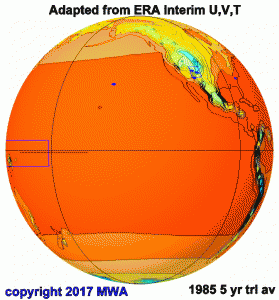
global temperature fluctuations 5 year trailing average several recent years A by mwa. Click image to animate
Although temperatures are stable, decadal atmospheric moisture circulation patterns happen to fluctuate as if solar cycles were the ultimate driver [8]. I would certainly agree that water has a greater heat capacity than air. With that in mind, one might be inclined to accept Dr. Willis’s claim [2] that he has been studying whether upwelling warm ocean water did more to shrink glaciers than warming air over the Greenland glaciers of his fancy. And yet, there is no way for the upwelling ocean water to reach the main glacier mass, ever. Also Dr. Willis was careful to claim that the warming air was only due to anthropogenic greenhouse gas emissions. How he was able to separate this air from naturally – warmed air is a topic for another post perhaps.
I’ll continue to revisit glacial subjects because for one thing, a geostrophic moisture (and temperature) record might explain why many glaciers retreat as others, even nearby, advance. The contradictory climate change notions and/or assertions, coupled with the ad hominems, courtesy of mainstream media and their scientific partners, don’t currently appear to add value in this goal.
This is a draft work in progress and includes opinions
References
https://www.usatoday.com/story/news/world/2018/12/05/greenland-ice-sheet-melting-unprecedented-rate-off-charts/2216223002/
[2] https://www.nbcnews.com/mach/science/key-greenland-glacier-growing-again-after-shrinking-years-nasa-study-ncna987116
[3] Solomina et al., 2016. Glacier Fluctuations during the past 2000 years. Quaternary Science Reviews Vol 149. pp. 61-9 https://www.whoi.edu/cms/files/solomina16qsr_238964.pdf
[4] https://pubs.usgs.gov/fs/fs-001-03/
[5] https://en.wikipedia.org/wiki/Whitney_Glacier
[6] Easterbrook, D. 2015 post at WUWT. Mt. Baker glaciers disappearing? A response to the Seattle Times
Mt. Baker glaciers disappearing? A response to the Seattle Times
[7] Roe, G.H., and O’Neal, M. 2005. The response of glaciers to intrinsic climate variability: observations and models of late-Holocene variations in the Pacific Northwest. Journal of Glaciology Vol. 55, No. 193
[8] Wallace, M.G., 2019 Application of lagged correlations between solar cycles and hydrosphere components towards sub-decadal forecasts of streamflows in the Western US. Hydrological Sciences Journal, Oxford UK Volume 64 Issue 2. doi: 10.1080/02626667.2019.
 5198total visits,1visits today
5198total visits,1visits today
